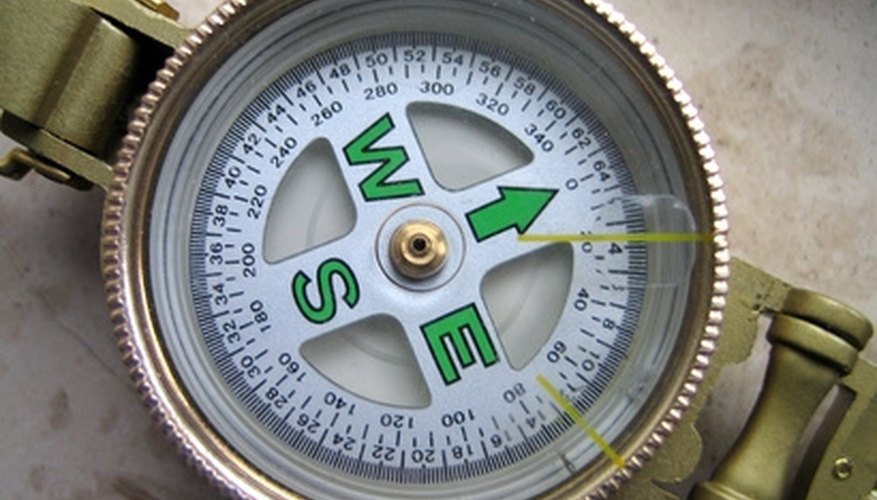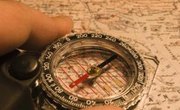
The Earth is a giant magnet. Magnetic compasses align themselves along the Earth's magnetic field. They point to magnetic north.
True north, the axis of the planet's rotation, is not the same as magnetic north. Modern topographic maps will indicate in the margin true north (with a star) and magnetic north (with the letters MN). You can easily calculate the declination of the region by finding the difference of those numbers.
But what if you don't have such a map? These steps will let you calculate your declination no matter what map you have.
Items you will need
Compass
Map
Pencil
Mark your position on your map.
Use your compass with the needle pointing to north to find the bearing of a distant but prominent landmark such as a mountain peak. Since you used your compass, this bearing is the landmark's magnetic bearing to you. Write that down.
Mark the landmark you used on your map. Use your compass to determine the direction between the dot representing you and the dot representing the landmark. This is the landmark's true bearing to you.
Calculate the difference between the magnetic bearing and the true bearing. This is your declination.
Imagine true north as twelve o'clock on a clock face. A magnetic bearing to the one o'clock side of twelve is a positive declination. A magnetic bearing to the eleven o'clock side means the declination is negative.
Warnings
- Ferromagnetic metals will render your compass inaccurate. Remove all coins and metal objects from your person before using a compass.
- Local geology can also interfere with your compass, so take measurements in multiple, distant locations.
- This method is only as accurate as your map.
Tips
- It's a good idea to calculate bearings to multiple landmarks and average your results.
- In the continental United States, the declination varies roughly from +20 degrees to -20 degrees of longitude.
References
Tips
- It's a good idea to calculate bearings to multiple landmarks and average your results.
- In the continental United States, the declination varies roughly from +20 degrees to -20 degrees of longitude.
Warnings
- Ferromagnetic metals will render your compass inaccurate. Remove all coins and metal objects from your person before using a compass.
- Local geology can also interfere with your compass, so take measurements in multiple, distant locations.
- This method is only as accurate as your map.
Writer Bio
Lawrence Nyveen has been a freelance editor, writer and researcher since 1993. He was editor of Netsurfer Digest and now teaches journalism at the college level. He is involved in screenwriting and with military history. His most recent book was "Avia S-199 in Israeli Air Force Service: 1948-1950." Nyveen holds a graduate diploma in journalism from Concordia University in Montreal.



